All visitors should attend a spectacle of traditional music and dance at least once during their stay in The Islands of Tahiti. These celebrations of Polynesian culture are rhythmed by the beating of the pahu drum, which represents the passion, vitality and harmony of the Tahitian people. Many hotels and resorts stage their own spectacles and music and dance is an important part of the many festivals and celebrations held in the islands throughout the year.
The biggest and most important cultural events of the year in The Islands of Tahiti are the heiva festivals. The most spectacular of these is the Heiva i Tahiti, which is held in Papeete every July. Dance groups from all the five archipelagos come to compete in this magnificent, traditional music and dance competition. It is a celebration of the ma’ohi culture that was suppressed for so long by European missionaries. The pride in this ancestral culture can be felt in the determined pounding of the tariparau bass drum. And the joy of celebration is present in the oscillating rhythms of the fa’aete drum, which is made from an animal skin stretched over a hollow wooden base and played with soft wooden drumsticks or by hand. The beautiful designs on the sides of the drums, often sea turtles and tikis, bear witness to their cultural importance.
The different drums
The to’ere is made of wood and played with a cone-shaped wooden drumstick. The sound varies depending on where the drum is struck, which makes it a difficult instrument to master. Like the tariparau, it is sculpted from a single piece of wood. The to’ere serves to set the rhythm and indicate the changes in step for the dancers.
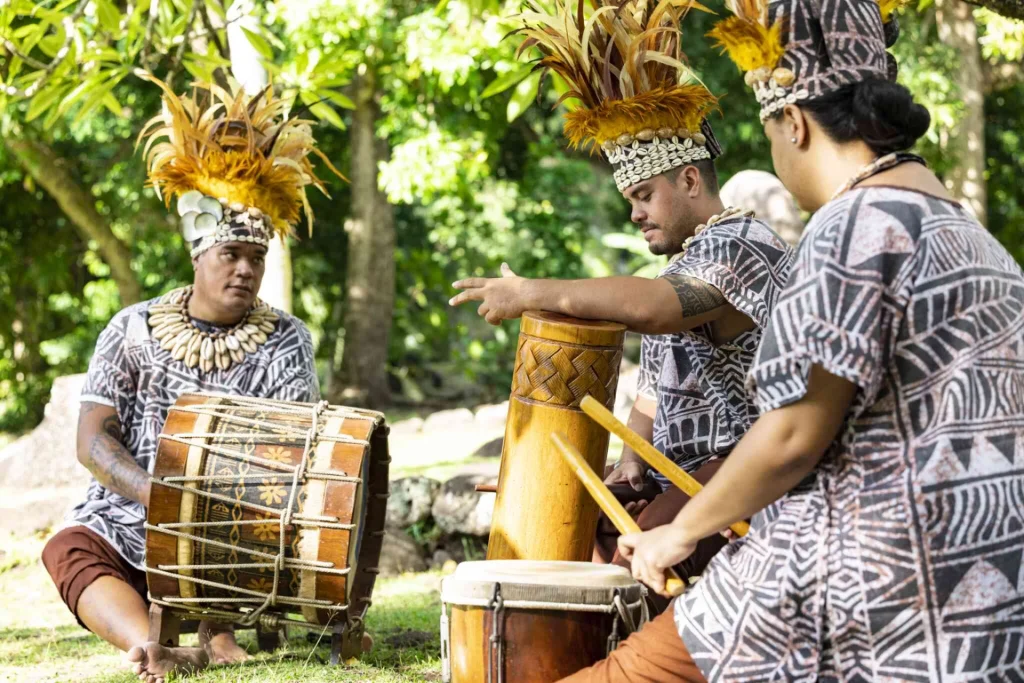
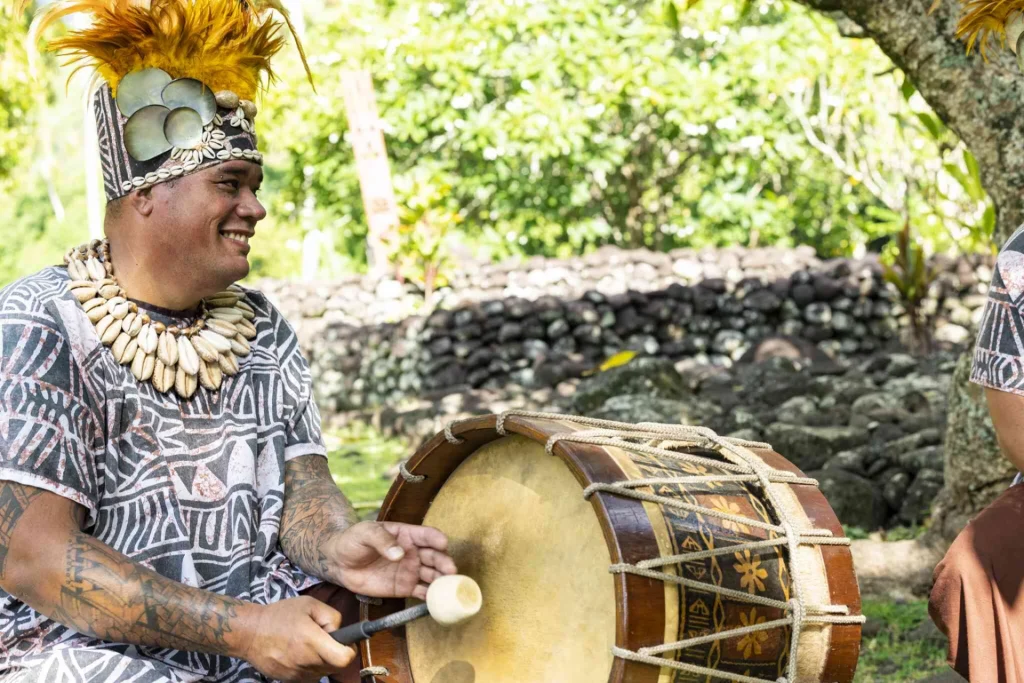
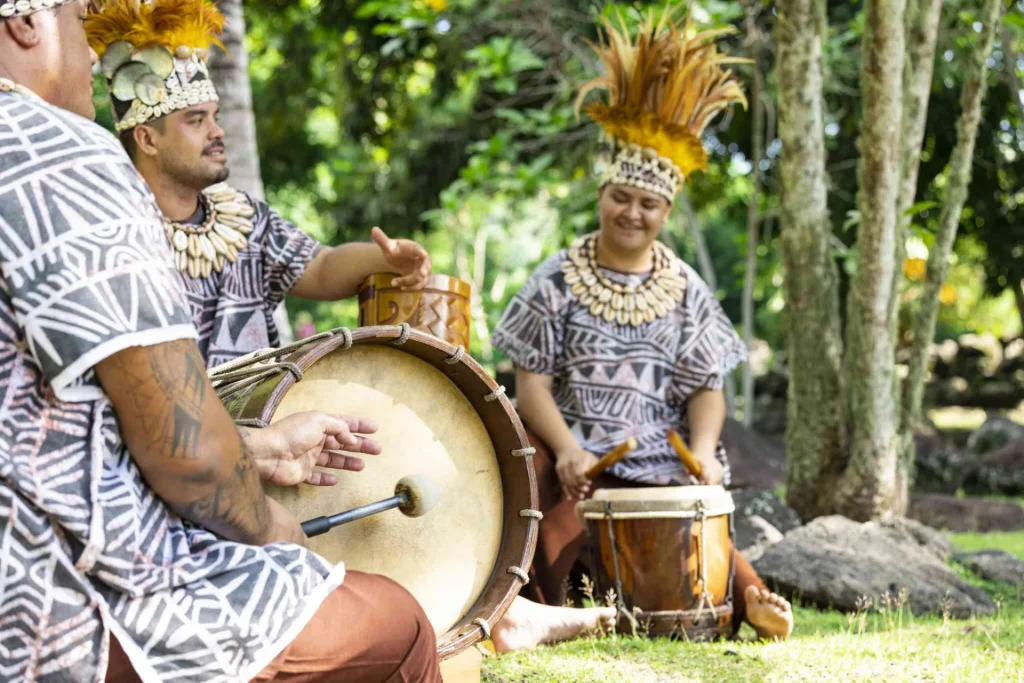
Tahitian and Marquesan drums are made from the wood of the beach cordia, rosewood, tamanu or coconut tree. They are extremely expensive to buy, so many drummers make their own instruments, especially the to’ere, which is basically a hollowed out log. You’ll often hear the sound of drum orchestras rehearsing in the evenings, particularly as the festive month of July approaches.
Tahitian drums – music and spectacles
A dance spectacle wouldn’t be possible without the accompaniment of a drum orchestra. There are usually between five and twelve drummers, and it can take weeks of rehearsal for them and the dancers to compose and coordinate the rhythms and movements. The rhythmic beating of the drums is equally as important to the spectacle as the costumes and ballet steps of the dancers.
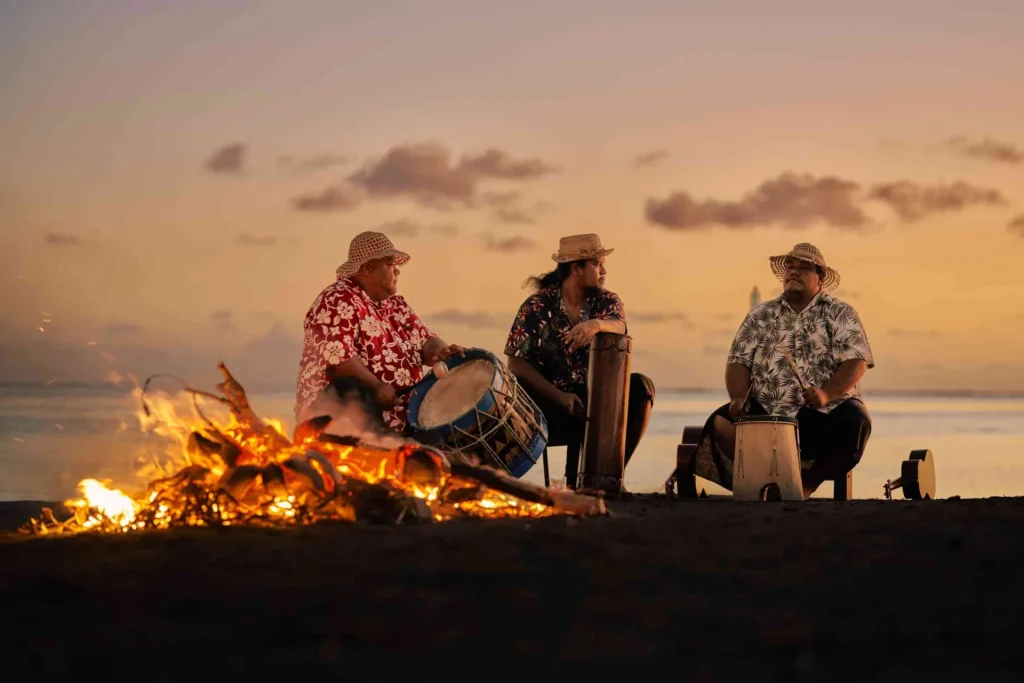
When Captain James Cook first arrived in The Islands of Tahiti, he described that both male and female dancers wore a simple tapa cloth around their waist. The vahine also had a garland of feathers over their breasts and flowers in their plaited hair. Crowns of flowers, called hei, are worn by male and female dancers. The dance is one of the rare occasions when vahine untie their hair and let it hang loose down their back. Costumes are often elaborate and can include very tall headpieces (hei upo’o) and the celebrated grass skirts and half-coconut bras, tapea titi. A big dance spectacle such as the Heiva i Tahiti is a unique and truly wonderful explosion of color, movement and rhythm. It is an exciting and integral part of Polynesian culture and an expression of the Mana in The Islands of Tahiti.
Themes

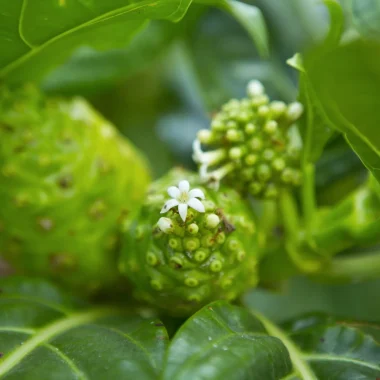
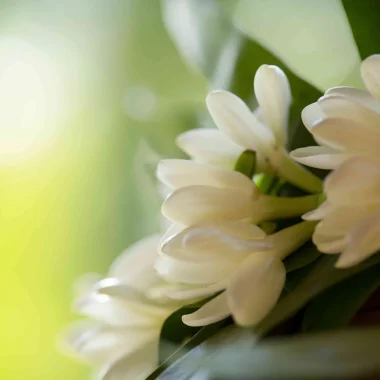
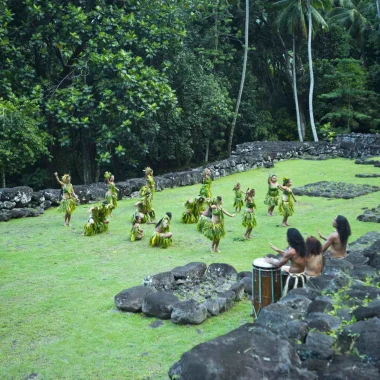
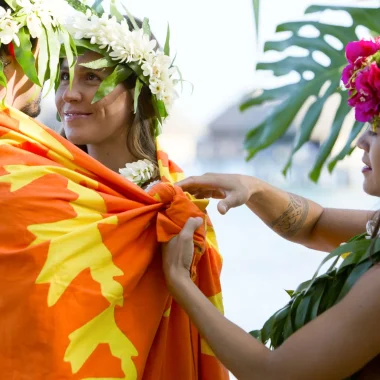

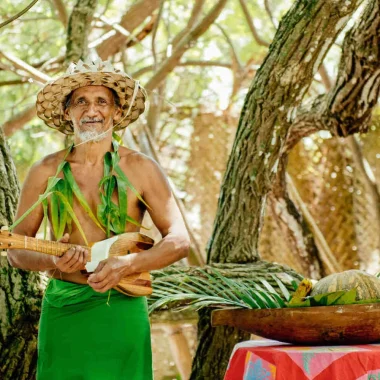
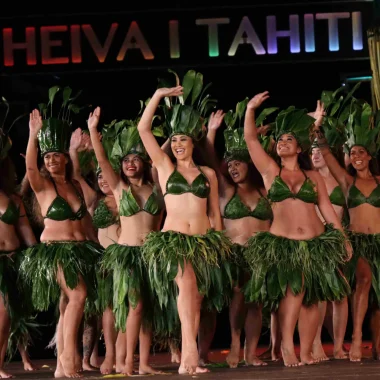
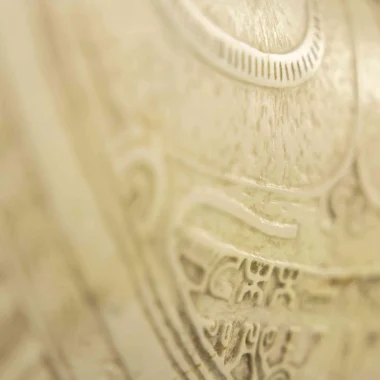
 América del Sur
América del Sur
 Australia
Australia
 Belgique
Belgique
 Brasil
Brasil
 Canada (EN)
Canada (EN)
 Canada (FR)
Canada (FR)
 Deutschland
Deutschland
 España
España
 France
France
 Italia
Italia
 Mexico
Mexico
 Polynésie française
Polynésie française
 New Zealand
New Zealand
 Schweizerisch (DE)
Schweizerisch (DE)
 Suisse (FR)
Suisse (FR)
 United Kingdom
United Kingdom
 United States
United States
 한국
한국
 中国
中国
 日本
日本